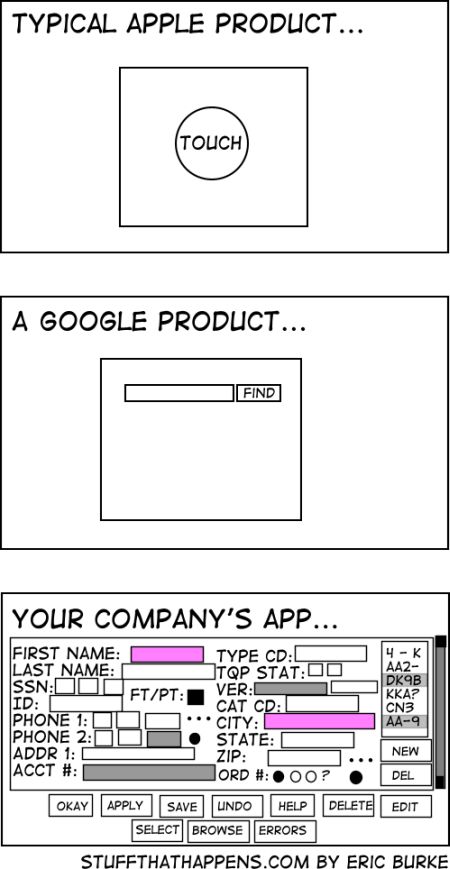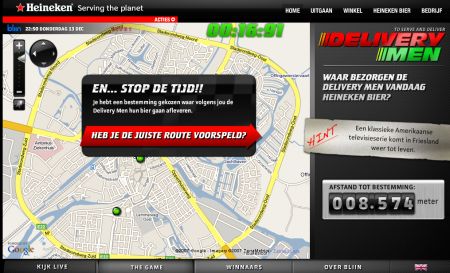von Roland Hachmann | Apr 1, 2008 | Ad News, Blog, Digital Marketing, Digital News, Marketing, Online Advertising
There is a standard joke around online advertising managers about the fear of those „chinese villages“ taking over one of your ad campaigns so that you receive the clicks you paid for, only all of them come from one and the same family (in China or India, or Eastern Europe or Antigua, etc. it doesn’t really matter).
But you don’t need to go very far away. Your next door neighbor might be part of a „click farm“. Even though he most likely never realised what he got himself into.
Just the other day I took a look at a site called OnlineTVRecorder.com (don’t want to give them any link credit). On that site you can record TV programms of any German TV Channel – most of which I wouldn’t even be able to access in this area of the country. You first record them, and then download and decode them. But you can only decode those that you „recorded“ in advance. This makes it similar to any VCR/DVD recorder and hence (I guess) a legal way of recording shows via the web.
So far so good. However, the system only works for you, when you pay per download with so called „good will points“. If you haven’t got enough points, you can’t download or decode any files.
And how do you get these points? There are two ways. Either you donate money, or you click on some of their ads. Yes, that’s right: you can click on the ads to receive good will points! You get points for clicks that advertisers pay a lot of money for (on aggregate).
I guess most users on this site aren’t fully aware of the fact that each of their clicks contributes to ripping of advertisers. Note: I am not saying „poor advertisers“ here! I am just saying that advertisers don’t get what they pay for when they signed the contract with these mediasites: intentional attention.
Clickworking is an interesting and positive trend, since it uses the minimal individual productivity of large crowds to achieve a large complex goal.
Clickfarming seems to be a dark side equivalent. Utilize the small contributions of a large crowd’s individuals who might not even (want to) realize that their few clicks are contributing to a large system of fraud.
I wonder how many other sites of this kind are out there? How much dubious content is paid for in this way? How many advertising campaigns bought on a pay-per-click basis have been corrupted by clickfarms like these?
If I was an advertiser and I saw one of my banners on one of those sites, I would ask my media agency or the publisher for my money back. And may be sue them.
von Roland Hachmann | Mrz 26, 2008 | Blog, Digital Culture, Marketing, Marketing Trends, SEO / SEA
Just the other day I posted this graphic at my german blog:

The graphic is from this place here. Just today I found the ‚corresponding article‘ about ‚how google and apple dominate‚ whatever field they are moving into. Written by Umair Haque, this article goes into the „no compromise for bucks“ philosophy that is at the core of their DNA – Goople’s DNA, as he calls the two companies:
The ends they’re working towards are similar: Goople aspires to – with laserlike intensity – change the world for the better. And where most of their competitors will sell out everything they believe in for a few bucks and a latte, Goople is deeply, radically purposive: they won’t compromise much, if anything, to achieve the goal of changing the world for the better.
Go read that and remember the graphic above. And then keep this in mind whenever you’re thinking of a company’s strategy.
von Roland Hachmann | Feb 5, 2008 | Ad News, Blog, Marketing, Social Media Marketing
Whenever I take a taxi, I am in no mood for a conversation. It’s either too early in the morning when I am on my to the airport, or it is late in the evening after a party… You know the deal. So I was a bit shocked, when I read about taxi drivers in London now being paid to start a conversation in which they try to explain the benefits of a certain product or service… Hope this doesn’t start in Germany. Don’t want a conversation in a cab and I certainly don’t want a sales pitch during a taxi ride…
The trick is organised by Taxi Promotions UK, who are apparently doing that kind of thing since 10 years, believe it or not!
A taxi ride gives marketers something they find increasingly elusive – a captive audience – at a time when consumers are bombarded with commercial messages and when digital technology gives them the power to skip TV ads.
The average London taxi ride lasts 16 minutes, said Asher Moses, managing director of Taxi Promotions. In a normal working day, a driver picks up 40 to 60 fares; multiply that by 10 drivers, for the 888 campaign, and the audience that can be reached in a campaign that lasts several months is sizable.
Scary? You bet. Who’s next, trying to sell us something, while we think we simply pay them for their services? Our hairdresser, our doctor, etc.?
von Roland Hachmann | Jan 3, 2008 | Ad News, Blog, Digital Marketing, Online Advertising
The Wallstreet Journal published a list of the best and worst ad campaigns of 2007. Amongst the best were the ad campaigns of Dove, the Simpsons Movie, Cadbury. Some of the worst were bud.tv, General Motors, Snickers and Chrysler.
Interesting fact: while I have seen/read about all of the good ones, I know none of the bad ones. So even while being over here in Germany, I know (about) the good ads. And I did see / learn about them through traditional media. Get it?
von Roland Hachmann | Dez 17, 2007 | Ad News, Blog, Digital Marketing, Marketing, Mobile Marketing, Online Advertising
Heineken in the Netherlands has launched a new advergame which looks interesting. The game asks playes to spot and track the delivery men of Heineken around the Netherlands and find out what their next stop will be. Whoever guesses correctly first, gets the chance to win a Nokia phone. So in a way, this game play is not that complicated or creative.

What I admire, is something completely different: Apparantly, these delivery men are tracked in real time with real journey data, during the regular working hours. And this is remarkable. I have also worked for clients with a huge fleet of delivery vehicles and I do appreciate the fact that Heineken managed to include their drivers into this game. Creatives usually come up easily with lots of brilliant ideas how to connect the mobile workforce of a client with a webpage via all sorts of mobile devices like phones or GPS tracking devices. But organisational reality most of the time kills these ideas.
So this won’t have been easy to push through the internal, most likely rather political, approval and commitment chain in order to get the buy in of all the different departments (marketing, distribution, logistics, etc.). Kudos, I like that.
(via)



 Wo ich sonst so bin...
Wo ich sonst so bin...